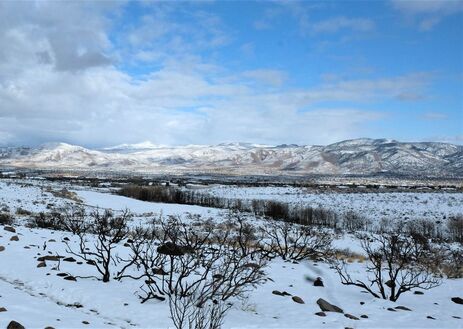 Riparian ecosystems are the plant and animal communities surrounding rivers and other bodies of freshwater. Particularly in the arid west, these ecosystems are extremely important for providing food, shelter, and water to a variety of wildlife. Riparian areas are usually more diverse and productive than their drier, upland counterparts. Plants in riparian areas often grow quickly and spread rapidly, and the water present provides habitat for aquatic ecosystems to form. When it comes to wildfires, the high moisture levels of the plants in this ecosystem can provide a buffer, stopping or slowing the spread of a wildfire. They can also provide refuge for animals fleeing fire. However, the presence of dense foliage in these areas can cause their own demise during drought years with high severity fires. If these plants experience a significant drought and there is a lot of standing dead (also literally called “fuel” in wildfire jargon), a wildfire can destroy an entire riparian ecosystem. Many riparian plants, like willows and aspens, are not adapted to survive wildfire and will die in a high intensity fire. This leaves the waterway vulnerable to erosion, excess sun, and sedimentation, damaging the aquatic ecosystem within it. Fortunately, riparian ecosystems can be very resilient and grow back quickly. Plants like aspens and willows can resprout through roots that often survive wildfire, restabilizing the soil quickly and beginning to form a canopy cover. Grasses and forbs often respond well to wildfire, sprouting quickly and forming important ground cover and forage for wildlife. A section of Thomas Creek, in the northern part of Galena Creek Regional Park, burned this season in the Rock Farm Fire, killing many of the aspens, willows, and alders. We will be monitoring the establishment and regrowth of these species in the coming years and documenting the restoration of this area.
1 Comment
|
AuthorThis blog is managed by the staff and volunteers of Galena Creek Visitor Center. We write about parts of the natural world that we find fascinating and want to teach others about, as well as keeping you updated on the Visitor Center and park. If you want to learn more, please sign up for our monthly newsletter, where we share upcoming events, updates on the ecology of the park, and highlights from each month. Archives
October 2021
Categories |
 RSS Feed
RSS Feed
